Behind the Curtain Wall w/ NYC Architect Richard Roth Jr: The Pan Am Building
Find out what went on behind the scenes while designing one of NYC's most iconic buildings, now known as the MetLife Building!


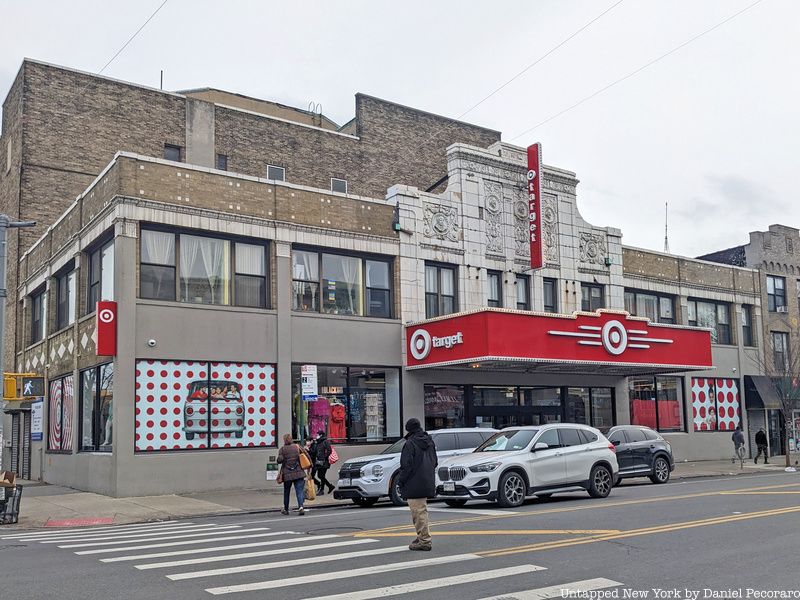
During the golden age of cinema in the early 20th century, it wasn’t uncommon to find multiple theaters within walking distance of each other in Brooklyn. In these palaces of entertainment, Brooklynites could see motion picture shows with the accompaniment of an orchestra or a bellowing organ, as well as live vaudeville performances. As the century progressed, however, trips to the movies began to decline and these once-grand theaters struggled to survive. Here, we take a look at the architectural remnants of the forgotten theaters of Brooklyn, former houses of entertainment that now serve as grocery stores, pharmacies, gyms, and other purposes. In this list, we’re focusing on the neighborhoods of Bay Ridge, Dyker Heights, Bensonhurst, and Sunset Park.
Visit these sites and see the architectural remnants for yourself on our upcoming walking tour!
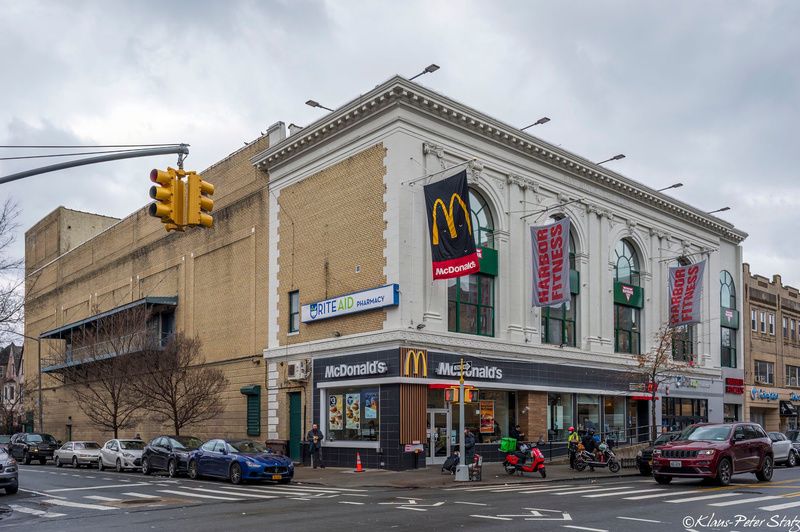
The Bay Ridge Theater had a gala opening on December 28th, 1915. The borough president took to the stage to dedicate the new theater to the people of Bay Ridge “as a temple of entertainment.” Standing on 3rd Avenue between 71st and 72nd Streets, the theater showed films and hosted vaudeville acts.
After the theater closed in 1959, it spent many years as a BINGO house. Later, it was converted into retail space. Today, there is a mix of businesses in the building including a Rite Aid pharmacy and a McDonald’s. The building itself maintains its exterior grandeur, with large arched windows, Ionic pilasters, and a dentil cornice.
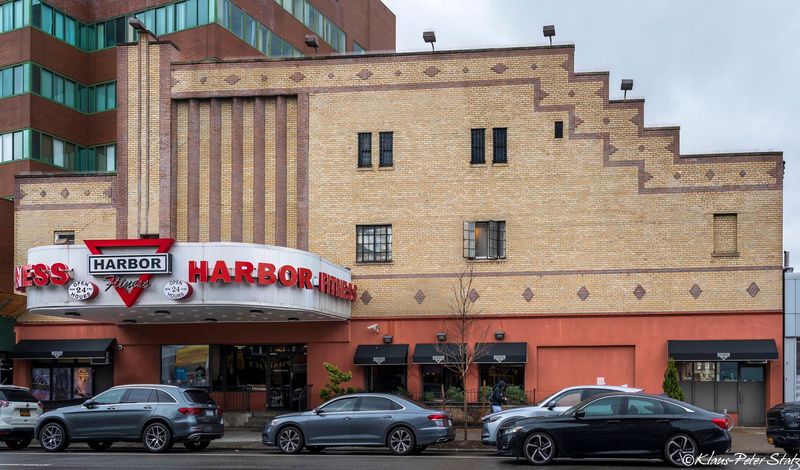
“Always cool as the harbor breezes,” was the slogan of the Harbor Theater on 4th Avenue in Bay Ridge when it opened in July 1935. The phrase advertised one of the theater’s main features, a $30,000 cooling system. The Brooklyn Daily Eagle described the theater as “absolutely fireproof” with a modernistic design and seating for up to 825 people.
According to Cinema Treasures, the theater closed in 1976 and was converted into the Harbor Racquetball Club. The balcony was replaced with locker rooms and the courts were installed at the orchestra level. Later the space also served as a fur showroom and is now the Harbor Fitness gym. Amid the treadmills and weights you can still see remnants of the stage’s proscenium and other decorative architectural elements inside.
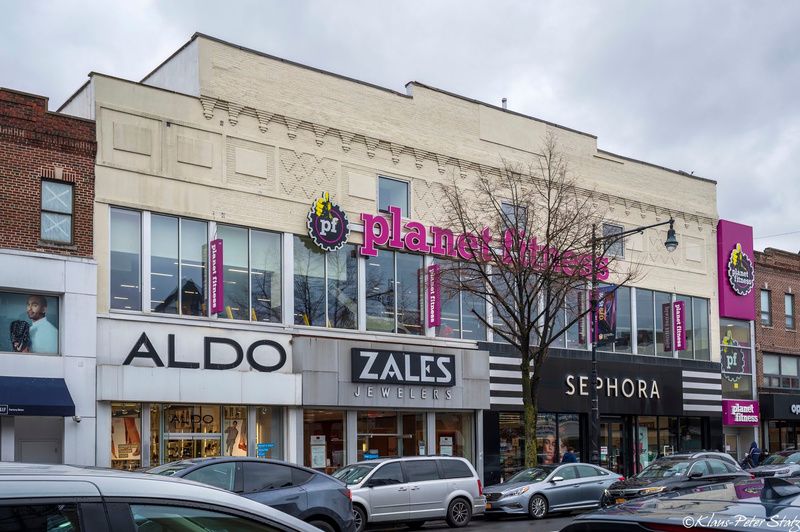
Another theater-turned-gym can be found on 86th Street in Bay Ridge, between 4th and 5th Avenues, just a few blocks from the former Harbor Theater. There you’ll find what was once the RKO Shore Road Theater. The theater opened in March 1924 with the film “Unseeing Eyes” starring Lionel Barrymore. The crowd on opening night was so large that some people had to be turned away!
The theater closed in 1951 and was purchased to be converted into stores and offices. Since then, the three-story brick building has been occupied by retail stores on the ground level. Today, Planet Fitness occupies the upper floors where the mezzanine once hung.
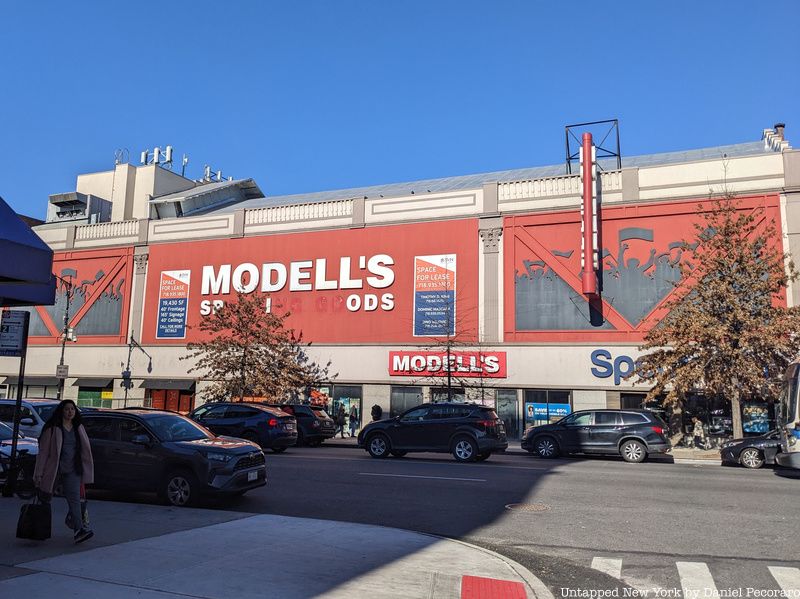
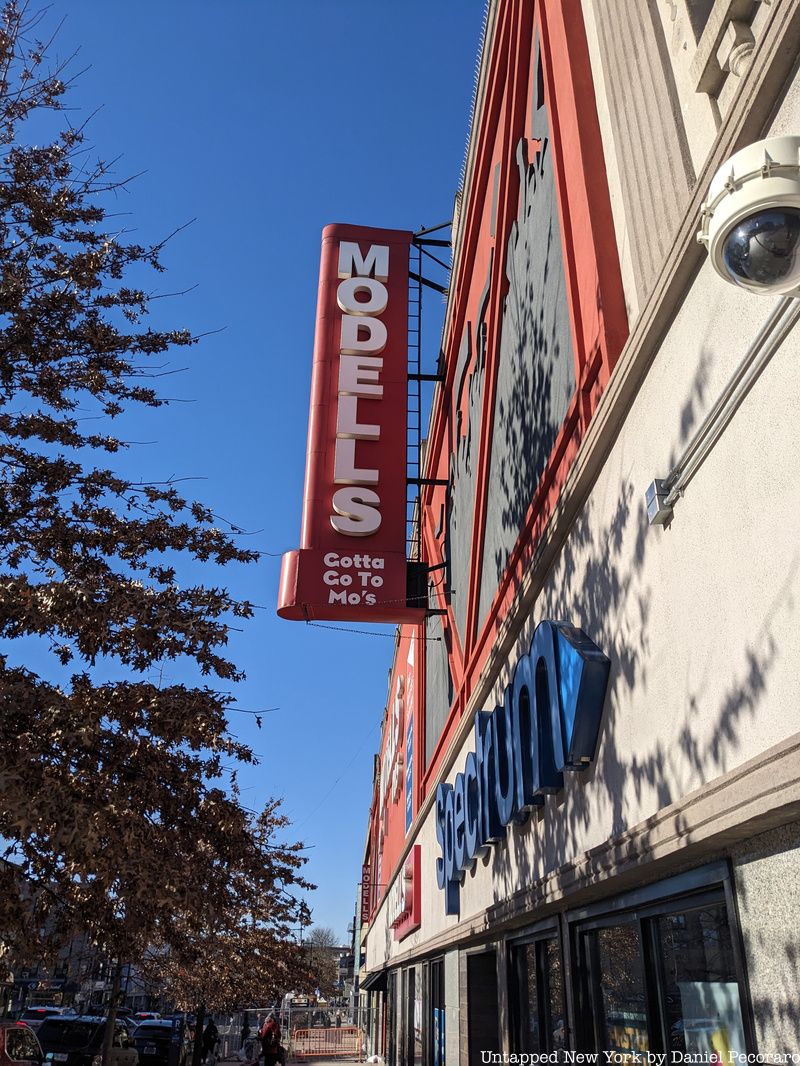
Just a block further down 86th Street, between 5th and 6th Avenues, RKO had another theater, Dyker Theater. This was a vaudeville and movie house that opened in November 1926. Equipped with a Marr & Colton organ, the theater could hold over 2,000 movie watchers.
The RKO Dyker closed in 1977 and was soon filled with retail shops. Today, a Modell’s sporting goods store occupies the balcony level. As in the Harbor and other former historic theaters, you can still see architectural remnants inside, and outside in this case. The historical vertical marquee sign has been refitted to advertise the Modells name instead of the theater.

The Walker Theater on 18th Avenue and 64th Street in Bensonhurst was named after New York City Mayor James J. Walker who was in office from 1926 to 1932. The theater opened in January 1928 and showed both first and second-run films as well as Italian-language movies. A Wurlitzer organ provided live music to the 2,316-seat crowd.
In 1984, the building briefly held landmark status, but that decision was overturned. Theater owners argued that the business couldn’t be profitable unless converted into a four-screen cinema and the designation wouldn’t allow that. If the conversion wasn’t approved, the business would fail and the building would be at risk of demolition. The landmark status was overturned and the theater turned into a quadruplex, but that still wasn’t enough to keep the theater afloat. The theater closed shortly after in 1988 and was turned into retail space, which for a long time was occupied by clothing retailers Mandee and Annie Sez. Today, the theater is perhaps one of New York City’s most interesting Target stores.
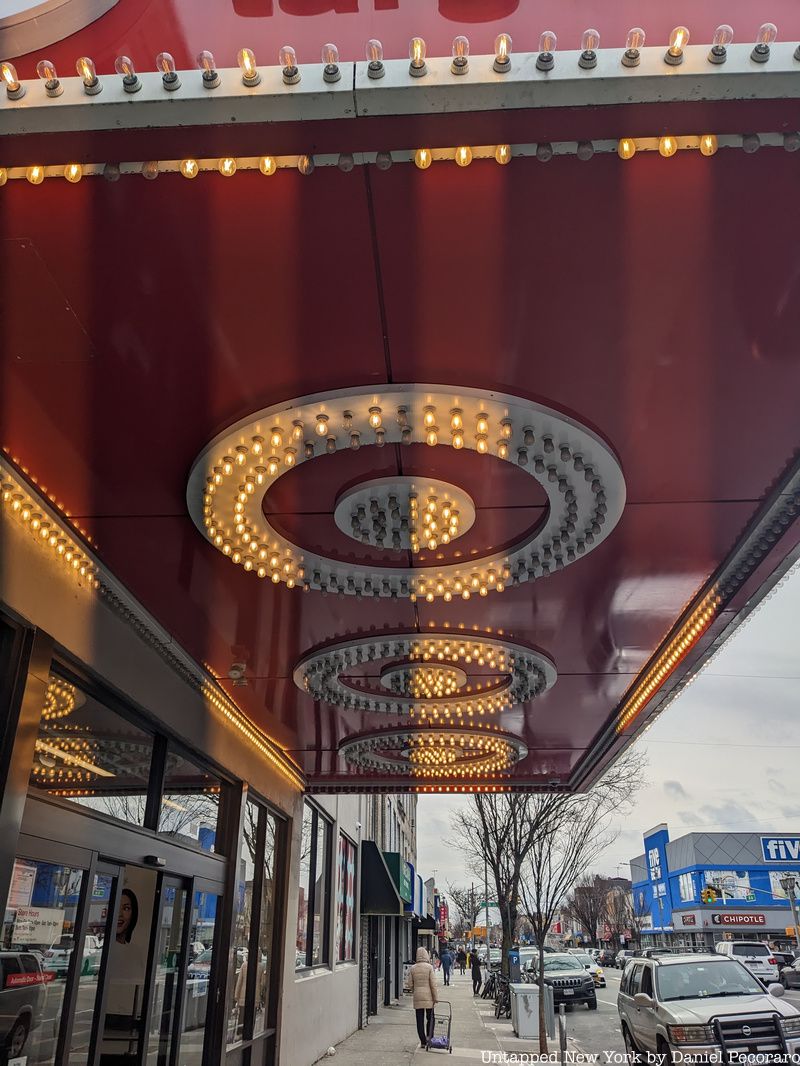
Target Express opened inside the Walker in 2017. The store pays homage to the building’s history with artwork depicting 18th Avenue and the former theater in the checkout area and the shimmering marquee which is reminiscent of the golden age of cinemas. Created by Philadelphia Sign, the large marquee features an Art Deco take on the Target logo and is illuminated by LED lights on the perimeter and shimmering bulbs in the shape of the Target logo below. A 2 sided vertical flag sign hangs above the marquee, installed with special attention to preserving the ornate stonework on the facade. Inside, the racks of clothes and shelves of products are surrounded by the theater’s historic frieze which was restored by Evergreene Architectural Arts.
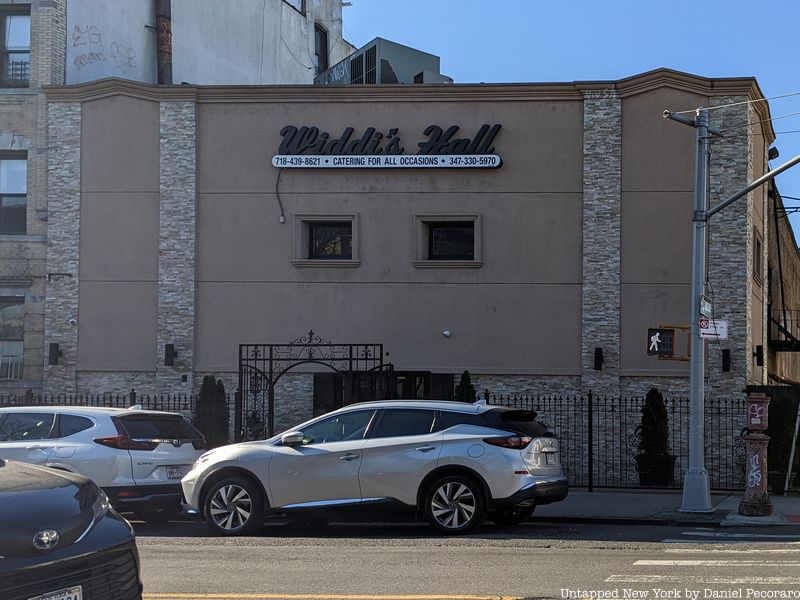
The legacy of the Center Theater in Sunset Park is now overshadowed by the legacy of Widdi’s Hall, the catering hall that now occupies the former theater space. It is so beloved by the Brooklyn community that 56th Street between 6th and 7th Avenues has been named Subhi Widdi Way in honor of the hall’s founder. Widdi immigrated to the United States from Palestine in 1960 and bought the failing theater in 1985.
The hall has changed appearance on the outside over the years and at one point was painted white and red with an awning replacing the marquee of the former theater. Today, it appears in a beige tone with stonework on the pilasters as seen in the photograph above. The Center Theater was originally called the Palace Theater when it opened in 1914. It was renamed in the 1930s.
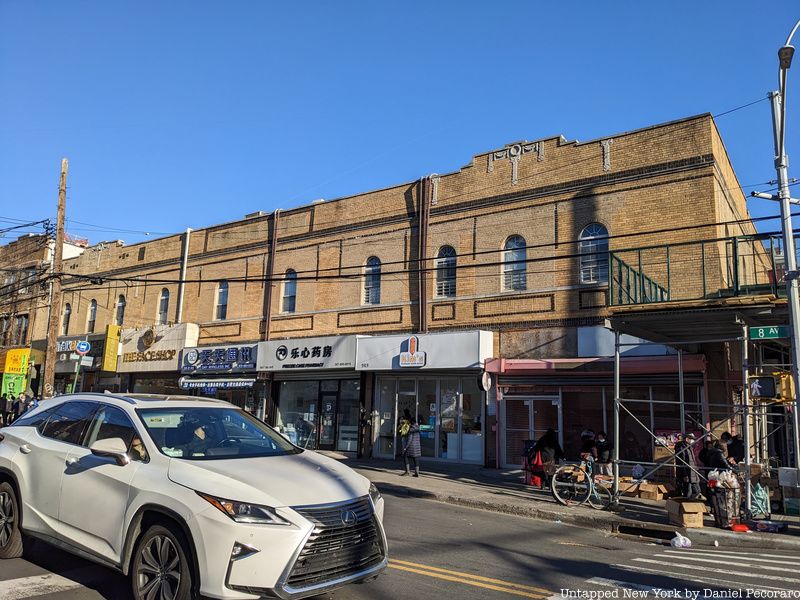
The Berkshire is also located in Sunset Park, not too far from Brooklyn’s oldest continually operating theater, Alpine Cinemas in Bay Ridge. Opened in 1926 on 8th Avenue between 60th and 59th Streets, the Berkshire played second-run films. It was owned by Interboro Circuit, Inc, a company that ran theaters across New York City, many of which you can still see today.
The Berkshire closed in the 1950s and in October 1955, became the new lodge of The Sons of Norway, a group founded in Brooklyn in 1923 to “promote and preserve the heritage and culture of Norway.” Today, the lower level is filled with retail shops and eateries, and a mosque occupies the upper floor.
On 4th Avenue and 52nd Street in Sunset Park you’ll find the small building of the former Coliseum Theater. Now occupied by a church, the theater opened in 1922. According to Cinema Treasures, the theater ran double features and then in the 1960s Spanish language films. In 1986, a new owner turned the theater into a quadruplex and showed first-run films. The theater closed in 1992 and was sold to Templo De La Alabanza (House of Praise), the current owners.
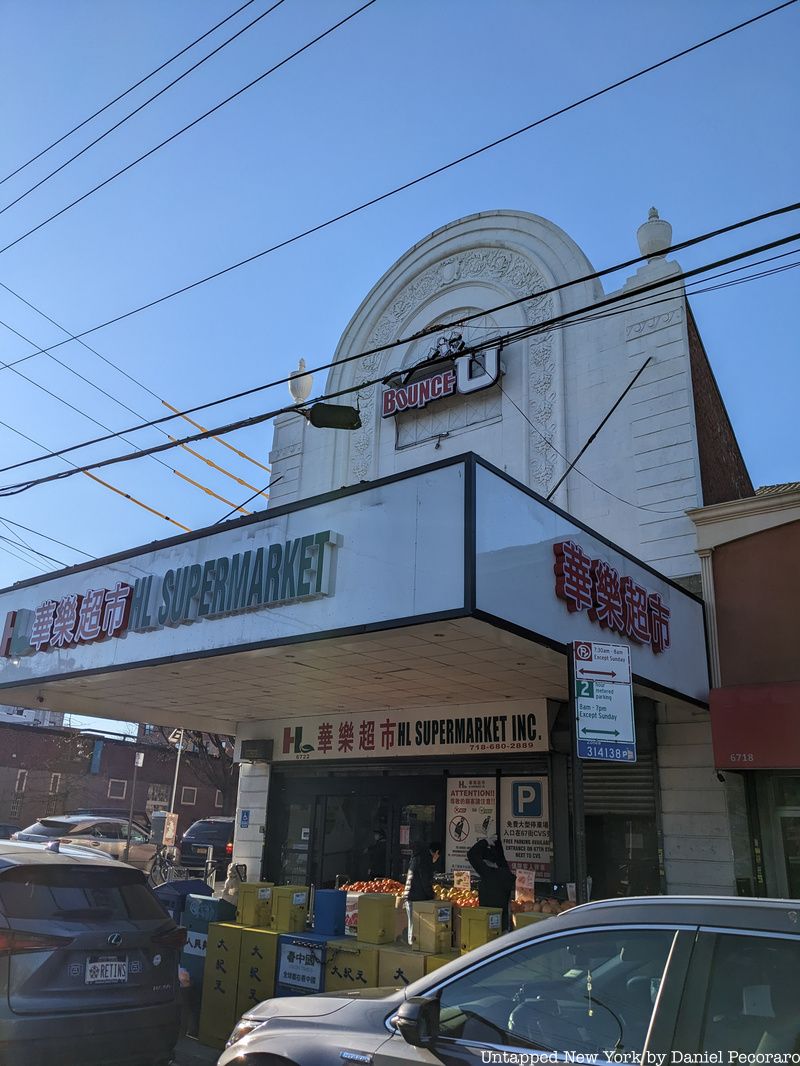
The Fortway on Fort Hamilton Parkway between 68th and 67th Streets was an independent theater that opened in October 1927. It showed both live and motion picture shows in what the South Brooklyn Home Talk newspaper called the “first atmospheric stadium in the East.” The opening day ad boasted of the 2,500-seat theater’s organ, large orchestra, and family-friendly programming.
The theater was later purchased by larger companies including Fox Films. In the 1980s, the theater became a Loew’s Cineplex with five screens. It shut down in 2005. Today it’s occupied by a pan-Asian market. A BounceU indoor trampoline park that used to be inside has closed.
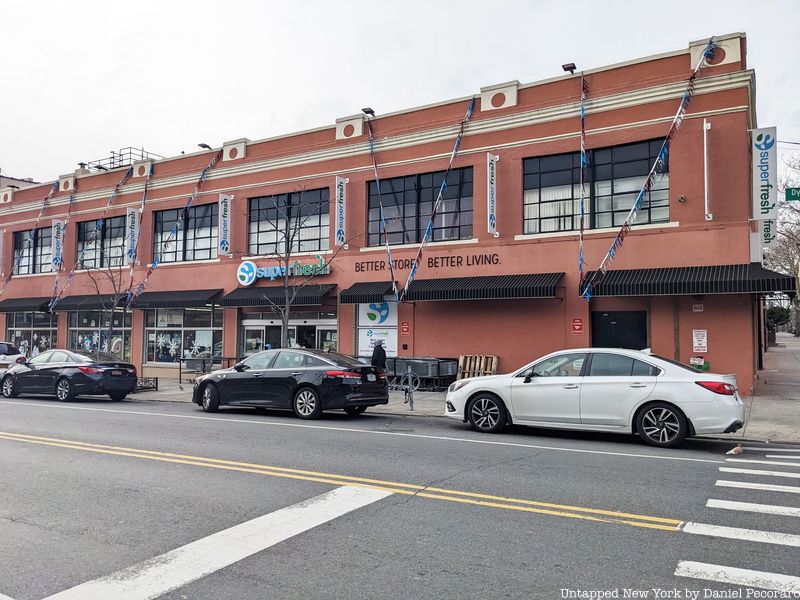
Stretching almost the whole span of 13th Avenue between 71st and 70th Streets in Dyker Heights is the former Endicott Theater building. Opened in 1927, this forgotten Brooklyn theater was the flagship location of the Endicott Circuit Theater company which ran moviehouses in Brooklyn and Queens. The company was headquartered at this location.
The flagship theater closed in 1954 and was converted into a supermarket. It has also served as a bank and is now a Superfresh Market.
While many theater buildings remain, even if the entertainment has long since departed, many other theaters in Brooklyn have been completely lost. Below we take a look at some of the theaters that have left no architectural trace.
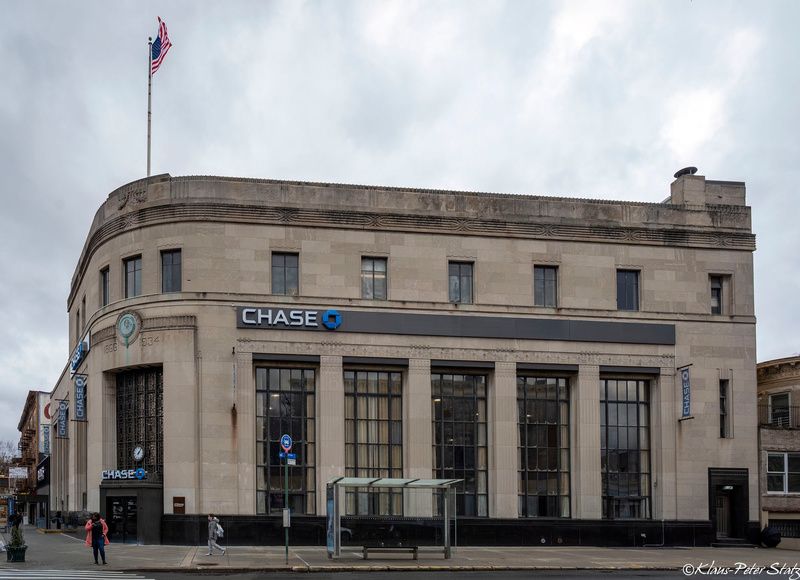
The Stanley Theater was once an independent second-run spot that opened in 1932 on the site of another former theater, the Colonial Theatre (1910-1932). Located on 5th Avenue between 74th Street and the Bay Ridge Parkway in Bay Rudge, it was a short Art Deco with a large marquee. The last film was shown in March 1957. Today the site is occupied by an Apple Bank branch, which stands next to the historic Lincoln Savings Bank building (now a Chase).
The Electra Theater was another independent theater that opened in the early 1900s. When it closed in 1953 it was converted into a supermarket. In the 1960s, the building was torn down and replaced with purpose-built supermarket structure at 3rd Avenue and Bay Ridge Parkway. Today it is a Key Foods.
The site of the former Ritz Theater is now under construction. Opened in 1926 and later known as the Fox Ritz Theatre, the movie house closed in 1959. with Kim Novak in “Middle of the Night”. For a long time the building was occupied by a supermarket as “The Ritz Theatre” was still displayed above the entrance. Today, the building has been demolished and the lot is under construction.
Next, check out The Oldest Theater in Brooklyn, Alpine Cinemas and Forgotten Movie Theaters of the Bronx
Subscribe to our newsletter